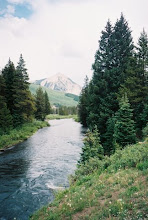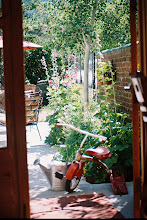Journal Entry Twenty three: Gemstones in the Valley
The
There are a lot of other gemstones to be found besides the aquamarine; jasper, topaz, smoky quartz, turquoise, amethyst, and lapis lazuli.
Please help me to complete writing this journal of hiking experiences. Here are some of my favorite hikes in the Arkansas River Valley of Colorado. Actually, some of these posts are personal summertime experiences as well. Feel free to add on your own personal hikes to share. I look forward to reading and learning from each of you.
Journal Entry Twenty three: Gemstones in the Valley
The
There are a lot of other gemstones to be found besides the aquamarine; jasper, topaz, smoky quartz, turquoise, amethyst, and lapis lazuli.
Journal Entry: Twenty three, Hagerman Tunnel Hike
This is one of the hikes we repeat every year because we enjoy it so. My hiking buddies and I always marvel at how we never grow tired or bored with some of the repeatable hikes. This is one of them. This is also a generously climbing rail bed that crosses the Continental Divide. This hike is labeled easy and is 5.5 miles round trip. This tunnel was the highest railroad tunnel in the world at the time of its completion in 1887 and it was 2,161ft. in length. The tunnel itself sits at an altitude of 11,528 ft. This hike starts on
Journal Entry: Twenty two, ATV’s
Make no mistake about it; I like to ride on my red ATV with the white lady bug decal firmly implanted on the right fender. I love the feel of the wind in my face and the experience of that raw, vibrating engine between my legs. But, I have found out the hard way that I cannot keep up with the men on high country, very steep, climbing enormous boulders, ATV excursions. No matter what we say, most women do not have the upper body strength to fight the bouncing and jarring handle bars of an ATV as it climbs a high country pass.
Take my word for it, those ATV’s will flip and go tumbling down rocky gullies in the flash of an eye. But anyway, this is still another wonderful way to experience summertime in the mountains. In my opinion, this is one way that the non-hiker can join in the experience of the real high country. There are a lot of places in the valley to rent an ATV, or a jeep, or a similar vehicle.
On the other hand, several of my friends have co-founded a group named the Quiet Use Coalition (QUC). Noise pollution is their greatest concern. They ascertain that places of quiet are becoming more and more difficult to find in
Journal Entry: Twenty One, Fly Fishing
There are more numerous sites to fly fish in
The
The spring and summer are prime seasons for the voracious mackinaw, the larger species of trout found here. But early spring is one of the most eagerly awaited seasons for fly fishermen in that the caddis fly is hatching and the trout literally go crazy, swarming to be the first to dine on them.
Most people are standing in the rushing river with their hip waders on for the serene experience. This is not a team sport with high fives and a lot of loud locker room banter.
This sport takes a person with patience, who appreciates the quiet, serene beauty of being in attendance with Mother Nature, not to take from her, but to join her.
Journal Entry Twenty: Restaurants in the valley
There are a surprising amount of excellent eating establishments in the
My current personal favorite place to eat is Laughing Ladies in Salida. This is a gourmet food restaurant. The owner/chef moved to Salida with his wife from
Journal Entry Nineteen: Mothers Bistro
The newest gathering place in
This was a wooden musical instrument which consists of a goose with loose joints on the end of a long stick, the legs of which the performer causes to tap rhythmically on a thin wooden board as if clogging. There are different versions also, instead of a limber goose. Sometimes you may see a limber jack, or limber horse or a raggedy man. These are all percussion instruments used in folk music to tap out rhythms, often played with old-time string band music. The realistic dancing motions produced by these instruments were a pre-cursor to “clogging”, both of which are popular dance styles in the Appalachian region.
Journal Entry: Eighteen, Stevie and the Rough Riders
The first biker walked up and informed me immediately that their “bikes” were “crusing” bikes, not mountain bikes, hence their hesitation to follow me on the dirt, gravel road. But they were all good natured about their side trip and the lunch and mountain/valley view proved all worth the effort.

